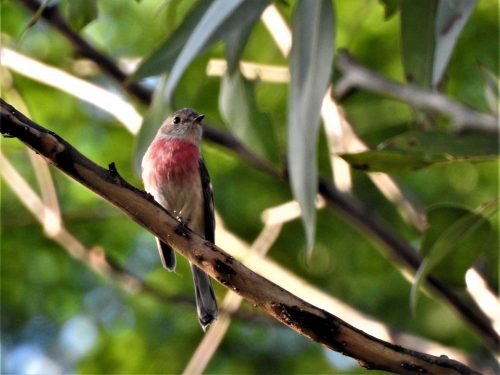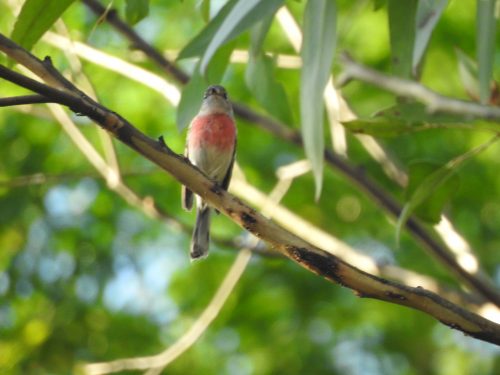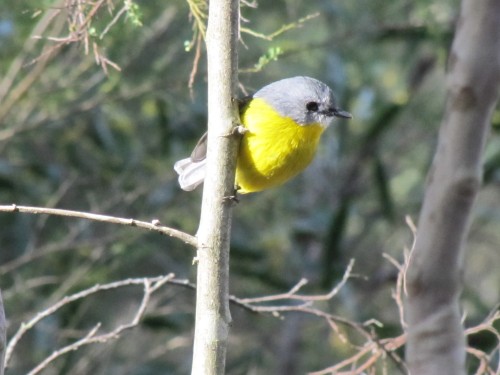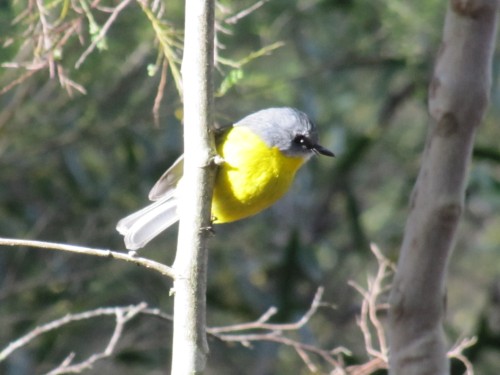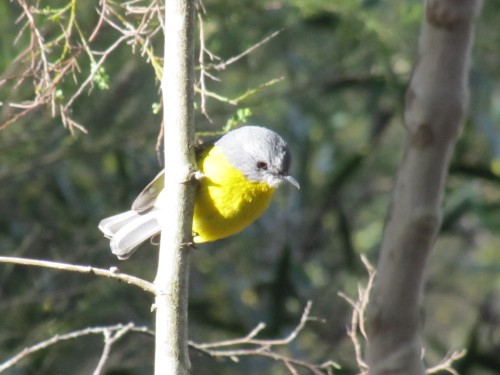Eastern Yellow Robin
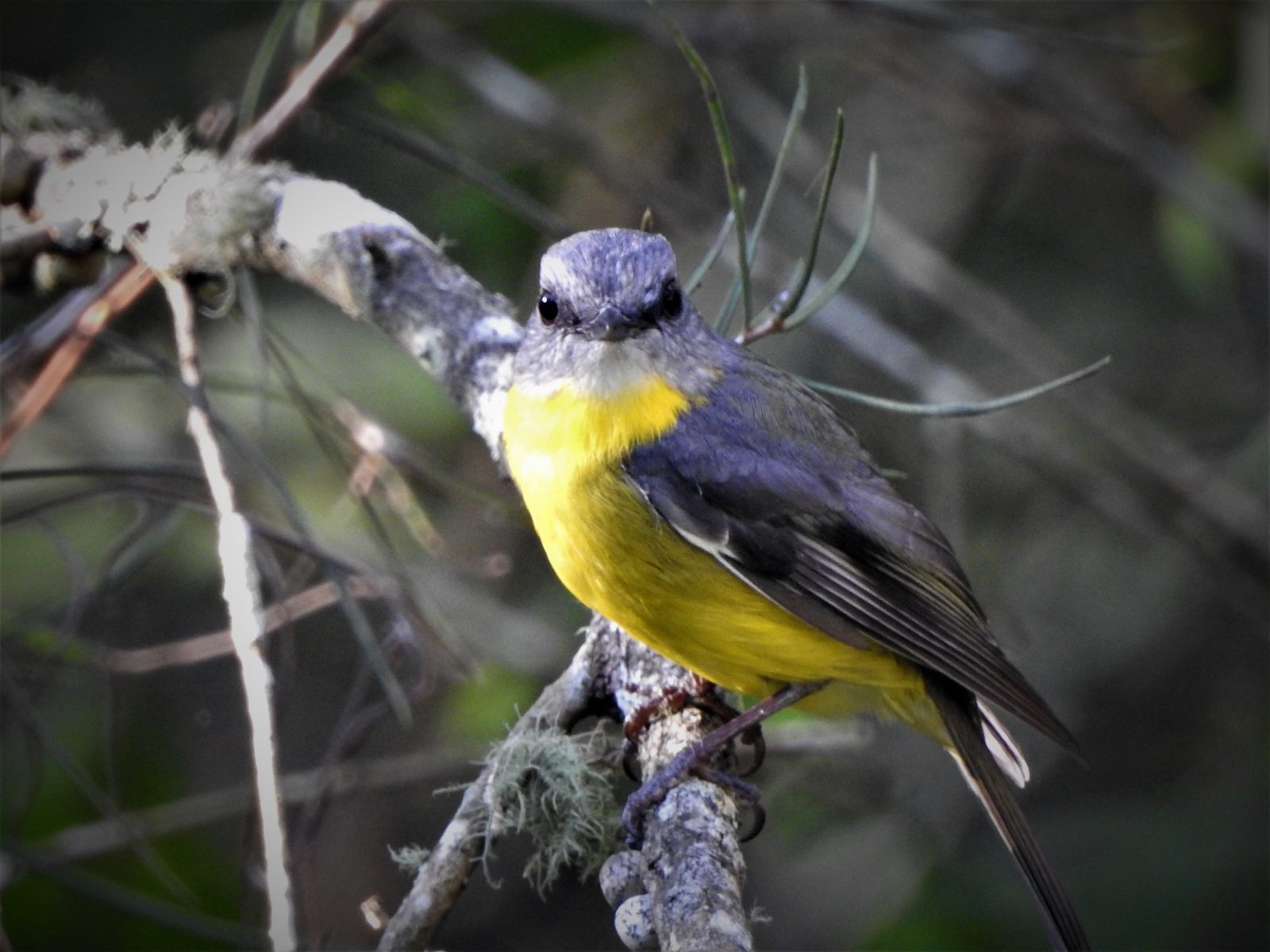
In my last post, I wrote about a short visit I had to the Lane Cove National Park in Sydney. This was during a visit to family in Artarmon. During that visit, I saw a good variety of birds, including the Eastern Yellow Robin shown in today’s photos.
This beautiful little robin lights up the woodlands when it shows itself out in the open, especially when it comes out of the shady parts and into the sunlight. This individual was very obliging and posed nicely for me. Sometimes photography can be like this and the bird cooperates.
Interestingly, the photos in this post were taken in the same spot as I managed my first ever sighting of a Rose Robin. These photos were taken immediately after the Rose Robin appeared, almost on the same branches of a tree near a small grassed glade in one of the picnic areas in the national park.
The Eastern Yellow Robin does not inhabit areas near my home in Murray Bridge in South Australia. In fact, I would have to drive for about two hours south to get into its normal range in the south-east of my state. The normal range of this species includes most of southern Victoria, the eastern half of New South Wales and up north through eastern Queensland. Another similar species, the Western Yellow Robin, is found in southern Western Australia through to the western part of South Australia (Eyre Peninsula).
Further reading:
At last – an Eastern Yellow Robin
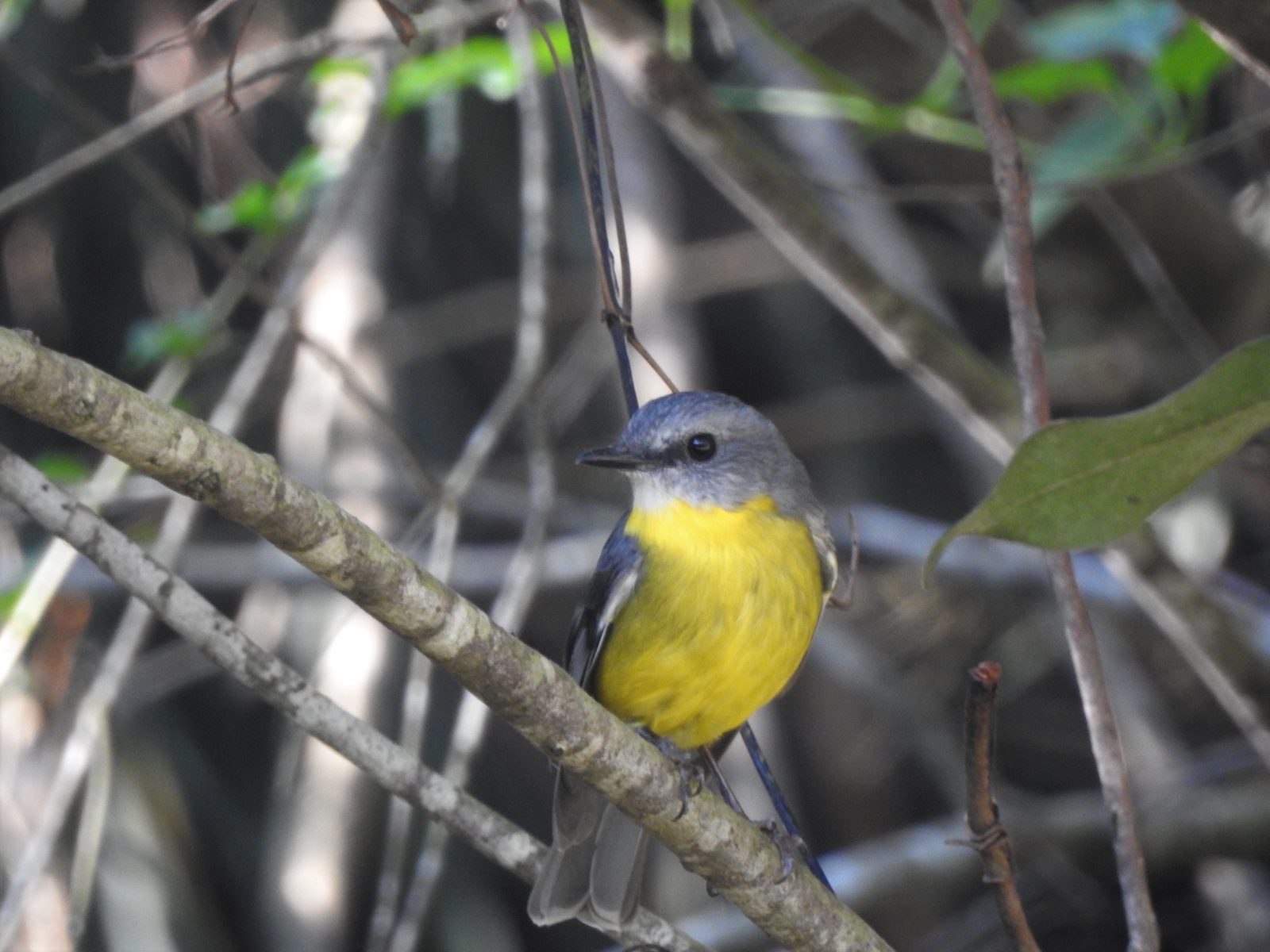
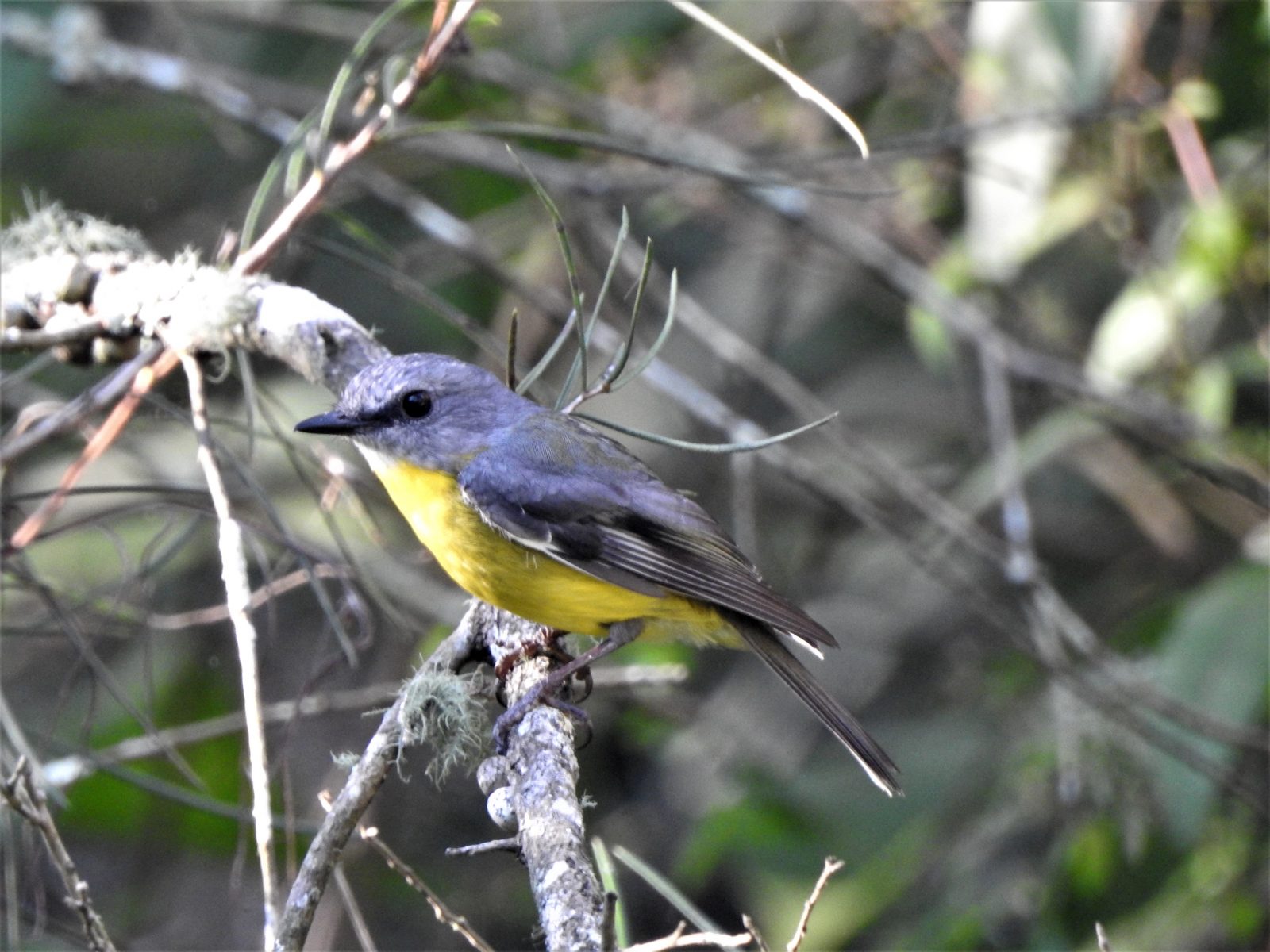
A new bird for my life list
I saw a new bird for my Life List yesterday.
A Life List is a list of all the birds a birder has seen. A “lifer” is a bird species seen for the very first time. It is easy to add lifers when travelling in a country for the first time. It is much harder to get one in your home country. It has been several years since I added another bird to my life list. I guess I need to get out more, especially in parts of Australia I haven’t been to yet. Say, ALL of Queensland and ALL of the Northern Territory and ALL of Tasmania.
Lane Cove National Park, Sydney
I spent a few hours yesterday in one of my favourite birding spots, Lane Cove National Park in Sydney. This delightful park has many well-kept picnic areas with toilets and barbecue facilities. It is also very accessible, being about ten minutes west of Chatswood and about 20 minutes drive from the Sydney Harbour Bridge (depending on traffic conditions.). I am fortunate that this park is so accessible from my son’s home in Artarmon. It is easy to see why this has become a favourite birding spot for me.
The bird in question, as shown in today’s photos, is the Rose Robin. It is a delightful bird with soft rose-coloured breast feathers. Until I saw it, I didn’t fully appreciate its delicate colouring. The females and juveniles lack the bright colours of the males, though some females may have a faint wash of pink. The birds feed on insects.
Distribution
The Rose Robin has a widespread distribution, from south-east Queensland, through the eastern ranges of New South Wales, throughout southern Victoria and occasionally into South Australia.
You can read more about the Rose Robin on the Birds in Backyards site here.
Good birding,
Trevor
At last – an Eastern Yellow Robin
At last – a series of photos of the Eastern Yellow Robin. It is a relatively common bird in its range. Trouble is, I have never spent much time in its preferred range. Having to travel great distances to see some bird species can be a pain at times, but when you see that elusive bird, or get a good photo of one that has eluded your lens up until that time, it becomes a special moment.
I have seen this species in many places over the years, but so far haven’t managed a photo – even a reasonable shot. Those shown today on this post are not brilliant, but they are a start. Now the goal is to improve on these photos.
The Eastern Yellow Robin is found throughout eastern Australia, from Queensland through New South Wales and southern Victoria and into south-eastern South Australia. Its close relative, the Western Yellow Robin is found in southern Western Australia and western South Australia. It has been well over 30 years since our last trip to WA. We must rectify that soon.
Today’s photos were taken in the grounds of the Australian Reptile Park. The robin was a wild bird and not part of their aviary collection.
Further reading about robins:
Some fellow writers and a Scarlet Robin
Today I attended the meeting of a writers’ group to which I belong. It was held in the home of a fellow writer who lives in Gawler, about an hour north of Adelaide and just over an hour’s drive from my home. It was an inspiring time hearing about the projects of my colleagues and the discussion lasted several hours – until the lunch food beckoned. The talk still continued over the meal.
On my way home I decided to do an hour of birding in Hale Conservation Park, just a few kilometres from Williamstown in the Adelaide Hills. It had been a few years since I’d walked through parts of the park. Despite the welcome sunshine, birdlife was a little slow. A few birds were calling but I didn’t see much. Eventually, just as I was about to turn back towards the car park, I saw a group of honeyeaters feeding in several trees near the path. They were Eastern Spinebills, New Holland Honeyeaters and Yellow-faced Honeyeaters. Most didn’t sit still long enough to focus my camera on them, though I did manage a few shots of the Yellow-faced.
As I was following them around, a male Scarlet Robin came and perched on a branch less than two metres from me. I had about three seconds to zoom, focus and press the shutter. The bird was gone just as quickly as it had come; I didn’t see it again. I’m so thankful that I managed to get it more or less in focus.
Sometimes you just get lucky!
Good birding.
Further Reading:
Flame Robin, Mt. Macedon, Victoria
While staying with friends in Gisborne in January, John took us on a tour of the district. One of the first stops was Mt. Macedon, a short distance north east of the town. We’d been there several times before, but I always enjoy this lovely spot. On previous occasions I had been disappointed with the lack of birds and this time was not much better. In fact I only recorded five different species, including Australian Magpie, Striated Thornbill, Grey Shrike-thrush and White-throated Treecreeper. Not an inspiring list for twenty minutes of birding.
While walking back to the car from the War Memorial Cross of Remembrance at the lookout I saw a dull brown bird that looked like a female Flame Robin. I managed the photo above which shows her in a very nice pose. A few minutes later I was delighted to find the male in all of his colourful glory. I had to be patient to get him to pose nicely. He was flitting around all over the place looking for a tasty meal. I was very pleased with one of the shots I managed.
Flame Robins are widespread throughout south eastern Australia. They are found in eastern New South Wales, throughout Victoria and Tasmania in suitable habitat and in southern South Australia. Their preferred habitat includes woodlands, open forests, farmland, grasslands, scrubs, orchards, parks and gardens. They breed from August through to January and lay 3-4 eggs. The nest is a rough cup of bark, grass, webs, and moss and can be lined with animal hair or fur. It can be made in a tree cavity or tree fork or even in sheds.
Reference:
Pizzey, G, and Knight, F, 1997: The Field Guide to the Birds of Australia. Sydney, Angus and Robertson.
